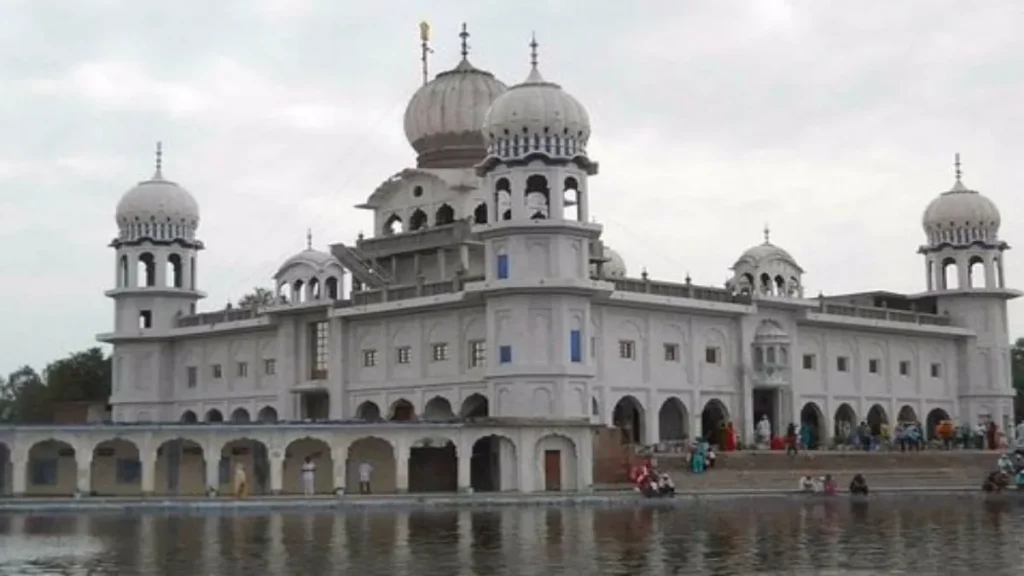Ambala District: HARYANA
Ambala District: Discover the historical significance, cultural diversity, and economic growth of this vibrant region in Haryana, India. Explore its heritage sites, industries, and festivals that showcase unity in diversity. Learn about the district’s past and present in this concise guide.

Ambala District, located in the northern Indian state of Haryana, is a region of historical significance, cultural diversity, and economic development. Spanning an area of approximately 1,574 square kilometers, Ambala District is divided into two sub-divisions: Ambala Cantonment and Ambala City. The district is well-connected by road and rail networks, making it a crucial hub for trade and transportation.
The district’s history dates back to ancient times, with evidence of human habitation found in archaeological excavations. The area has witnessed the rise and fall of various empires, including the Mauryan, Gupta, and Mughal dynasties. The city of Ambala, in particular, gained prominence during the Mughal era as a trading center due to its strategic location on the Grand Trunk Road.
Today, Ambala District is known for its vibrant culture and festivals that celebrate the region’s rich heritage. The district is a melting pot of diverse communities, including Punjabis, Haryanvis, and migrants from other states. This cultural blend is reflected in the festivals, languages, and cuisines found in the area. Baisakhi, Diwali, and Eid are celebrated with great fervor and unity, highlighting the district’s communal harmony.
Economically, Ambala District has evolved into an industrial and commercial powerhouse. The district boasts a range of industries, including textiles, scientific instruments, and metalworking. The district’s industrial growth has contributed significantly to Haryana’s overall economic development.
Education and healthcare also play a crucial role in Ambala District. The region is home to numerous educational institutions, from primary schools to higher education centers. The availability of quality healthcare facilities ensures the well-being of the district’s residents.
Tourism is another key aspect of Ambala District’s identity. The district is dotted with historical sites, including the Ambala Fort, which stands as a reminder of its past. The Badshahi Bagh Gurdwara, dedicated to Guru Tegh Bahadur, attracts pilgrims and tourists alike.
The district’s administrative authorities have undertaken various initiatives to enhance infrastructure, promote tourism, and foster economic growth. Improved road networks and connectivity have facilitated trade, while the preservation of heritage sites has boosted tourism.
Challenges, however, do persist. Urbanization and population growth have placed pressure on resources and infrastructure. Balancing modernization with the preservation of cultural heritage remains a priority for the district’s administrators.
In conclusion, Ambala District embodies a blend of history, culture, and progress. Its historical significance, cultural diversity, and economic vibrancy make it a microcosm of India’s evolving identity. With ongoing efforts in infrastructure development and cultural preservation.
Famous Places in Ambala District
Ambala District boasts a plethora of famous places that blend history, culture, and natural beauty. From historical landmarks to religious sites, here are some notable destinations to explore:
Ambala Cantonment: A historic military area known for its well-preserved architecture and vibrant markets. The cantonment holds significant importance in the district’s history.
Ambala City: This urban center is a hub of commercial activity, with bustling markets, shopping complexes, and local eateries. The city’s vibrant atmosphere gives visitors a taste of modern Haryana.
Ambala Fort: A symbol of the district’s historical past, Ambala Fort is a majestic structure that stands as a testament to its significance during the Mughal era. The fort’s architecture and design are captivating.
Badshahi Bagh Gurdwara: A revered Sikh shrine dedicated to Guru Tegh Bahadur, attracting pilgrims from near and far. The gurdwara’s serene surroundings and religious significance make it a must-visit.
Rani Ka Talab: A scenic lake surrounded by lush greenery, Rani Ka Talab offers a peaceful retreat from the city’s hustle and bustle. It’s a popular spot for picnics and relaxation.
Sis Ganj Gurudwara: Another important Sikh shrine, this gurdwara holds historical significance as it commemorates the site where Guru Tegh Bahadur was martyred. The serene ambiance and religious importance draw devotees.
Holy Redeemer Church: An architectural marvel, this church is known for its stunning stained glass windows and peaceful ambiance. It’s a unique spiritual attraction in the district.
Bhawani Amba Temple: This ancient temple dedicated to Goddess Bhawani Amba attracts devotees seeking blessings and spiritual solace. The temple’s intricate architecture reflects the region’s cultural heritage.
Gurudwara Manji Sahib Patshahi Chhevin: A revered Sikh gurdwara that commemorates the visit of Guru Hargobind Sahib Ji. The gurdwara’s historical and religious importance makes it a revered site for Sikh pilgrims.
Cactus Garden: Managed by the Haryana Agricultural University, this unique garden houses an extensive collection of cacti and succulents from around the world. It’s a botanical attraction worth exploring.
Gandhi Park: A serene park named after Mahatma Gandhi, offering a tranquil environment for relaxation and leisurely walks. The park’s lush greenery is a refreshing escape from city life.
City Park: A family-friendly park with play areas, walking paths, and green spaces. It’s a popular spot for locals to unwind and enjoy outdoor activities.
Ambala District’s famous places embody its rich history, religious diversity, and natural beauty. Whether you’re interested in history, spirituality, or simply enjoying nature, the district has something to offer every traveler.
Read More :-
